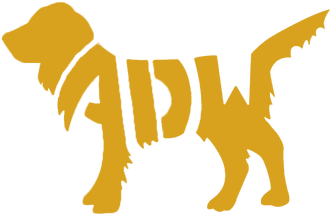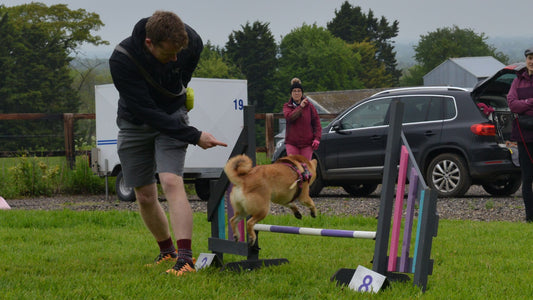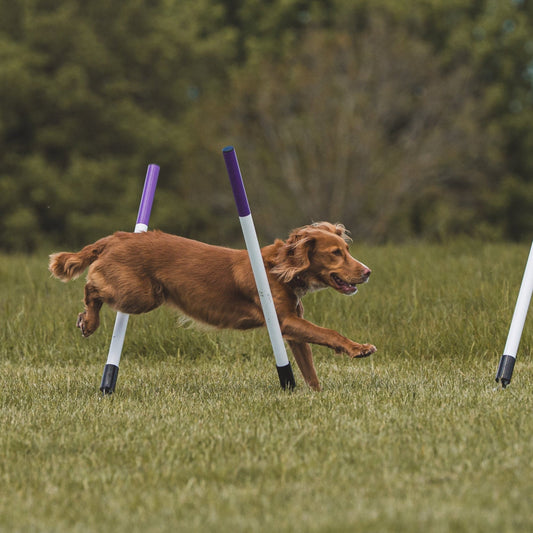"Go round": Guide 2
Get Started in Dog Agility at Home. Guide 2: "Go round". Going around a single jump wing or pole following the handlers ‘driving arm’.
Requirement: your dog can complete a full circle complete a full circle around the obstacle in both directions following a lure. Find a guide to training this first part by searching 'Go Round' in the website search bar.
What: A ‘go round’ is where the dog goes around to the back of a jump and takes off the opposite side than they were previously travelling.
In this exercise, we will use an empty hand to direct the dogs behind an obstacle and to turn around it.
Why:
- This exercise progresses from our foundations with a lure (see guide 1), the dog is working more independently following the handler and not a lure.
- Go round is a move that is likely to feature in an agility course, such as the corner of a box.
- This training provides mental and physical enrichment for the dogs
- Can be a good indoor activity and a way of tiring them out if you are less able.
How to practice dog agility at home:
Find an obstacle that you can use for the dog to circle, for example, a post in the ground, chair, or large flowerpot.
- Start with the dog on your left with a pole ahead (12 o’clock) Move your hand in the same way as you did in session 1 but with it empty to guide the dog around the pole with your right hand
- Click or say your marker word as they pass the post
- Drop reward just beyond the pole, to encourage them to complete the circle (3 o’clock)
- Progress treat placement from just past the pole to by your feet (6 o'clock).
- Practice 5-8 x then give the dog a rest between repetitions.
Want a challenge?
You have been using an empty hand to guide the dog around the pole. To progress, can you fade your hands motion from a full circle, down to just pointing to the side you want them to bend around in gradually increments?
For example, when turning clockwise, you will have been starting at the left in front of your dogs nose, and tracing out a circle in front of them, around the pole in a circular motion as the dog follows. To progress, can you start the movement in the same way, but stop moving 2/3rd of the way in and your dog still complete the turn? With each success, gradually move your guiding hand less. If the dog looses momentum, and doesn't complete the circle, go back to practicing earlier stages with more support from you, the handler.
Goal to achieve: Practice until your dog is reliably following the handlers empty hand directing them behind a single post in the ground and turn around it so that we can add a verbal cue in the next session
About the author:
Hi 👋 I’m Emma, accredited as a professional dog trainer by the Institute of Modern Dog Trainers (IMDT). I help owners of energetic dogs achieve the dog-owning life they envisioned by providing robust obedience & agility training for dogs in Balsham, near Cambridge.
Disclaimer: The content of this article does not include personalised advice and is for information purposes only. If you need individual advice or other enquiries please click here to get in contact or if you're not local to Anglian Dog Works, you can find a trainer in your area by going to the IMDT website: https://www.imdt.uk.com/find-a-qualified-imdt-trainer
Please share your questions and progress:
We would love to see how you get on with your dog’s introduction to place boards. For tips from our trainer and to share success post your pictures and videos in the Anglian Dog Works Facebook group. https://www.facebook.com/angliandogworks


